The business world is dynamic and fast-paced, making it essential for professionals to stand out when applying for roles. A one-size-fits all resume will not do, so you need to develop a resume that showcases your skills, experience and education in the most effective way possible. This sample resume for business and management positions features tailored sections so you can highlight what’s most relevant to specific job opportunities. It also contains helpful tips on formatting, keywords, career advice and more. Each section is linked to a detailed article with insider advice from professional resume writers. If you’re looking to enter the business or management field, your resume needs to be tailored accordingly. Potential employers want to see exactly what sets you apart from other applicants as well as your transferable skills from your previous roles. This sample resume shows you how, with plenty of insider tips along the way.
Business and Management Resume Example
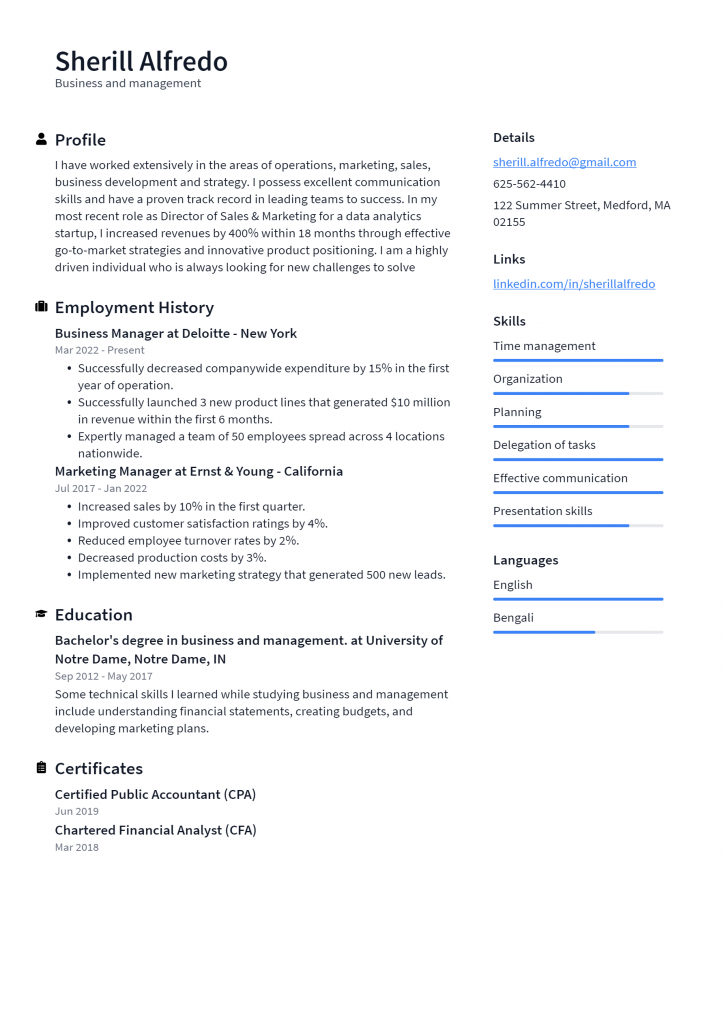
Download This Business and management Resume as PDF
Business intelligence analyst Resume Example
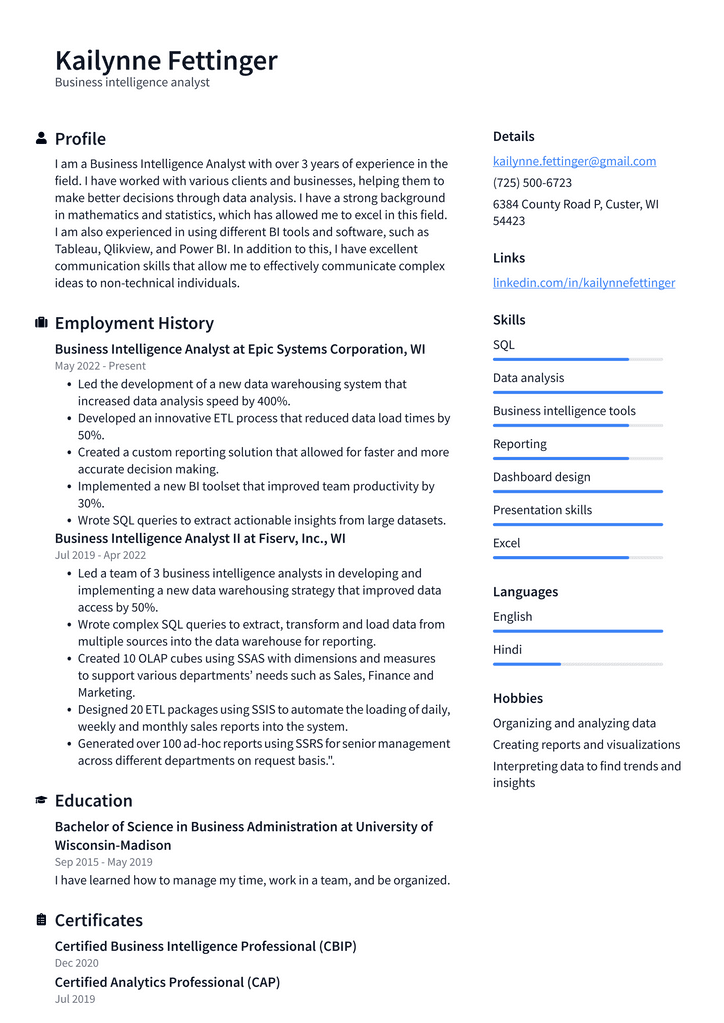
Download This Business intelligence analyst Resume as PDF
Communications manager Resume Example

Download This Communications manager Resume as PDF
Change manager Resume Example
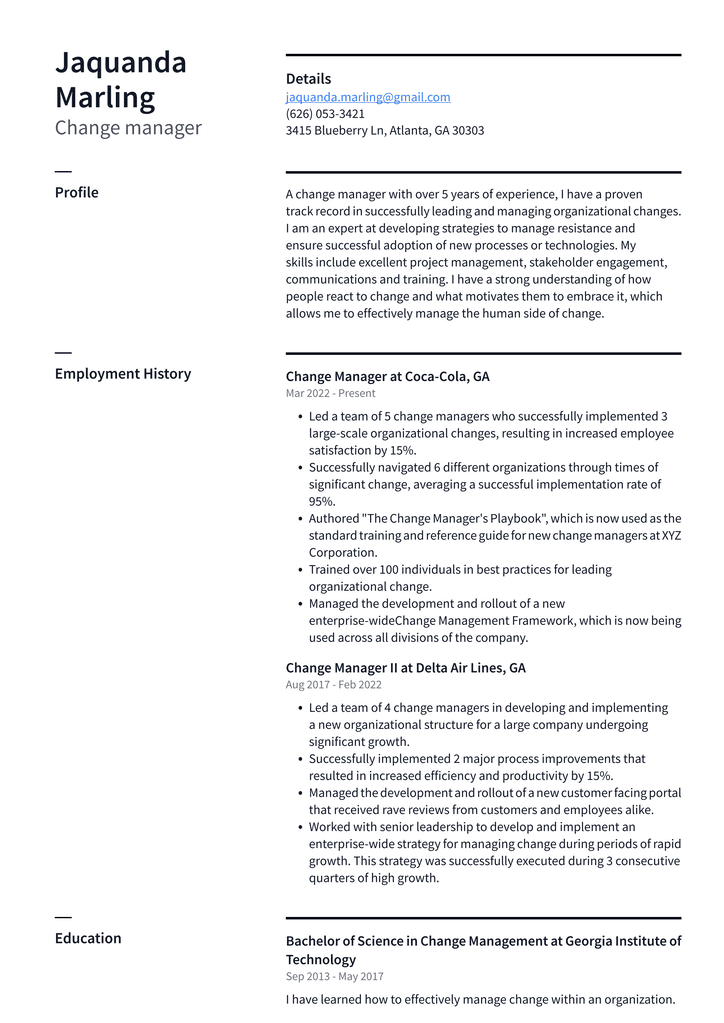
Download This Change manager Resume as PDF
Business development manager Resume Example
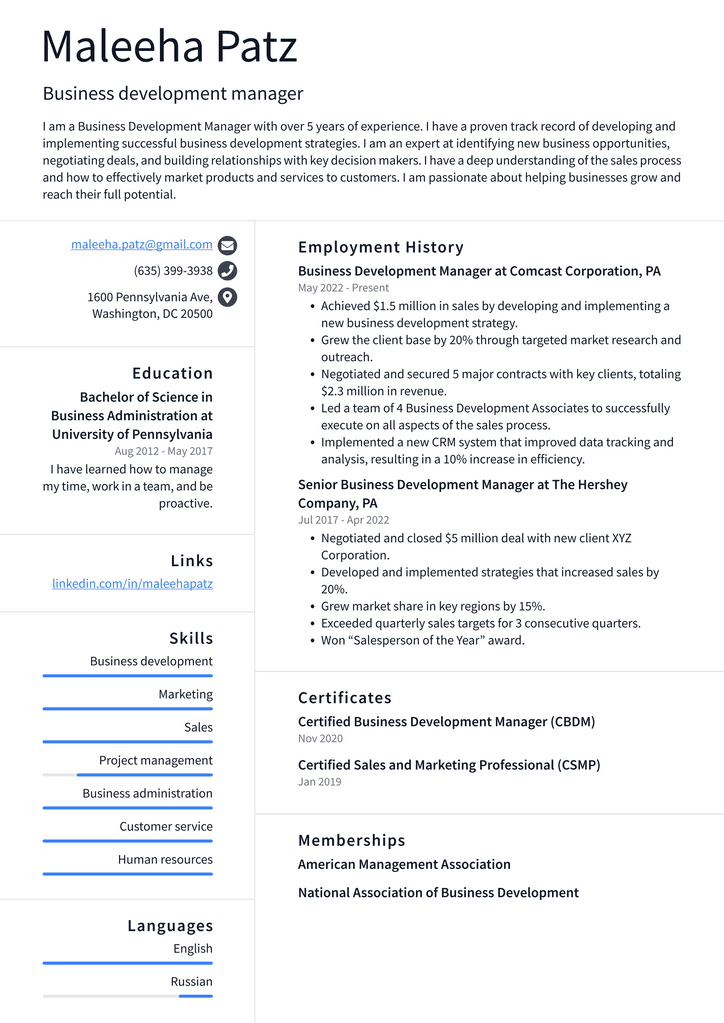
Download This Business development manager Resume as PDF
Business process analyst Resume Example
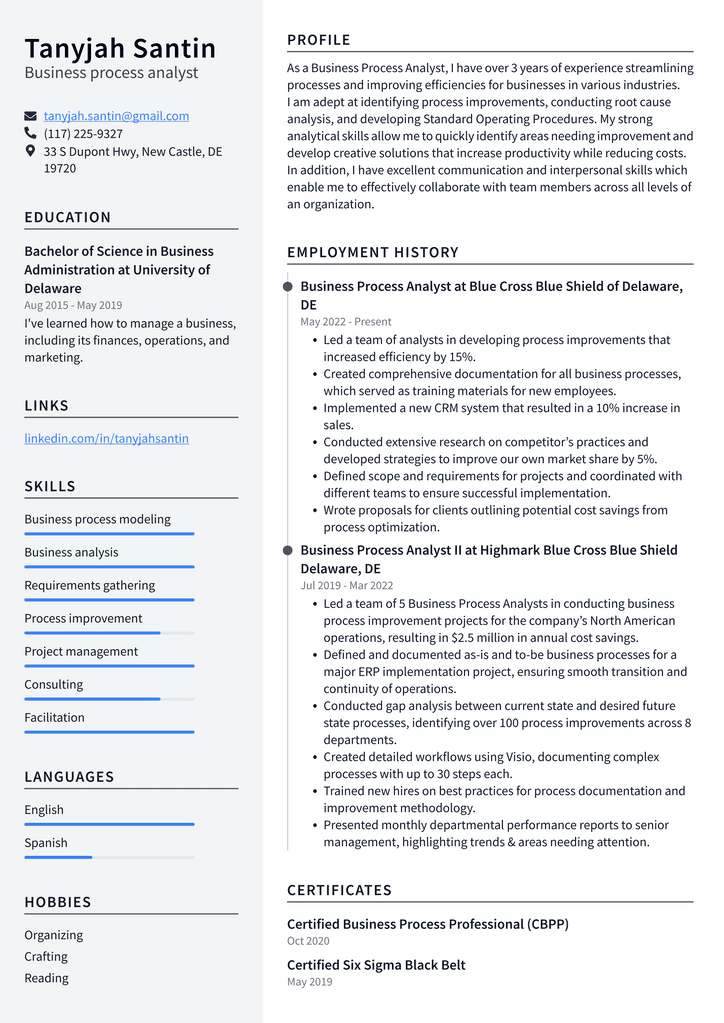
Download This Business process analyst Resume as PDF
Business analyst Resume Example
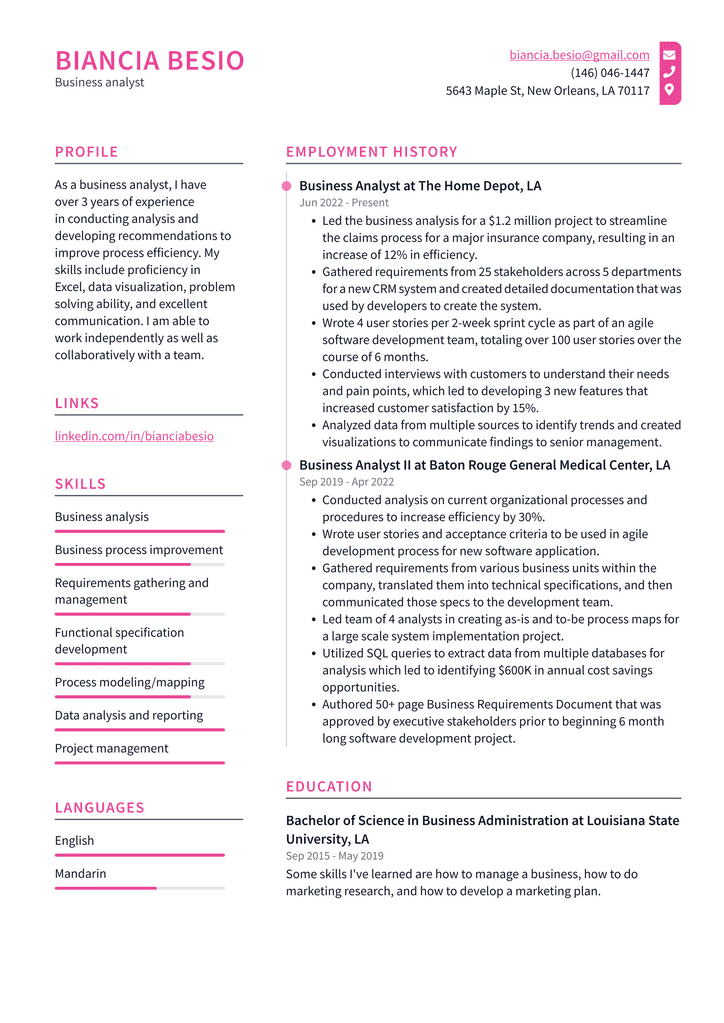
Download This Business analyst Resume as PDF
Resume Introduction: Why It’s Important
Before diving into the details of this sample resume, let’s start by taking a look at the importance of the resume introduction section. This part of the resume is designed to create a first impression and set you apart from other applicants, so it is crucial that it stands out. This section is often the first that a hiring manager sees, so it must be concise and easy to understand. It should also be representative of your brand as a professional, so that a potential employer has a clear idea of what you are all about.
Business Resume Formatting Tips
The most important thing to remember when formatting your resume for business and management positions is to be direct and to the point. You want to keep your resume to one page and make sure the hiring manager knows exactly what you want them to know about you. A business resume is typically formatted in reverse chronological order, so your most recent experience is listed first. You may want to consider having a second resume for other positions that you may be applying for as it may not be appropriate to list all your experience in reverse chronological order.
Summary of Qualifications
This section is usually located toward the top of the resume and is where you will list your credentials and qualifications. It may be beneficial to include your skills, abilities and credentials in this section, in addition to your education and experience. This section is meant to emphasize your strengths and key abilities as a professional. A hiring manager wants to see what makes you the right person for the job and this section allows you to discuss your most relevant experience.
Professional Achievements
This section details your professional achievements, which could include any awards, recognitions, published works, patents, special projects, etc. You could also consider listing any volunteer or board positions and leadership roles. This section is beneficial in that it allows you to discuss your achievements without needing to go into too much detail about your experience. You should make sure the achievements you discuss are relevant to the position you are applying for.
Education
This section is where you can discuss your education history and any degrees, certifications or other credentials you may have. You may want to consider listing the degree you obtained, the institution and the graduation year. You may also want to include information about any language, computer or other skills you gained through your education. This section is usually located toward the bottom of the resume, just above your key skills section.
Key Skills
This section is where you can list your key skills, abilities and strengths as a professional. These are often transferable skills that you have acquired through your education and experience and can be very beneficial in getting your foot in the door. You can also consider listing your desired skills in this section as well. This allows a hiring manager to see that you are open to expanding your skill set.
Professional Experience
This section allows you to highlight your most recent experience. You should list your most recent positions first, followed by the positions before that. You can decide how many positions you want to list in total, with three-to-five being the average. A hiring manager wants to see what you have done recently and what you have learned from it. You may want to consider including the duties you performed in each position as well as the name of the company.
Conclusion
This section is your opportunity to leave a lasting impression on a hiring manager and is often referred to as the final paragraph. You want this to be positive, concise and memorable. Your conclusion should summarize the skills and strengths that you have demonstrated throughout your resume and show that you are the right fit for the job.